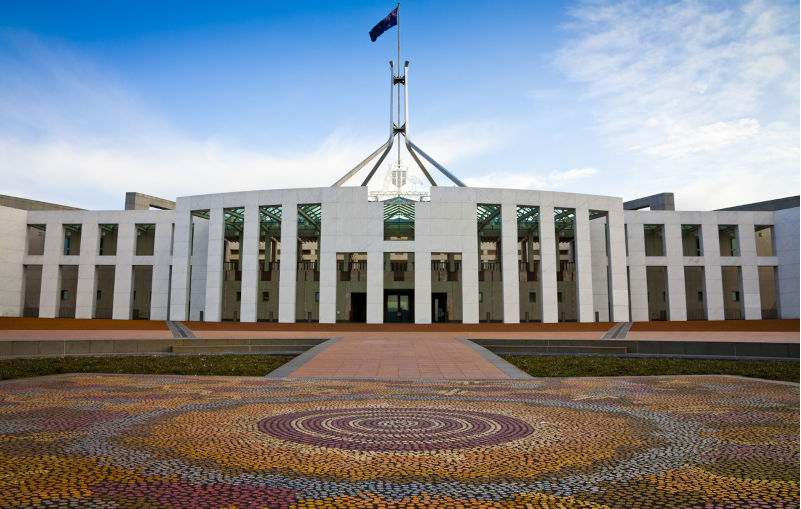Only a republic can reverse executive power creep
November 22, 2025
A democratic republic would end the structural uncertainties that allowed both the Whitlam dismissal and Scott Morrison’s many ministries, as well as bringing the Australian people into a new constitutional relationship.
For half a century, Australia’s constitutional anxieties have been framed around one singular trauma: the 1975 dismissal of the Whitlam Government. It remains the moment when the fragility of our system—one that pretends the Crown is neutral, omniscient, and above politics—was laid bare. But the lesson of 1975 is not frozen in amber. It is repeating itself in new forms, through quieter, more incremental erosions of democratic accountability.
Today, Australia is drifting into what scholars call executive constitutionalism: a system where constitutional meaning is reshaped not by the people, nor by Parliament, but by the Cabinet and the machinery surrounding it.
Decisions that once required public scrutiny, legislative contest, or even political courage have occurred through ministerial discretion, intergovernmental agreements, and bureaucratic instruments that never reached a public forum.
The clearest contemporary example came during the Morrison Government, when the Prime Minister covertly swore himself into multiple ministries without informing Parliament, the Cabinet, or the public. The problem was not simply the secrecy, it was how effortlessly the Constitution could be bent to accommodate it. No royal veto, no parliamentary trigger, no constitutional alarm bell was activated. The incident revealed an uncomfortable structural truth: Australia’s executive is effectively self-policing, relying on political norms rather than democratic architecture.
In both 1975 and 2020–22, the underlying fault line was the same: our constitutional system does not have a clearly accountable, identifiable executive, chosen by the people and answerable to them. Instead, power is channelled through a blend of Westminster convention, inherited monarchy, Cabinet secrecy, and a governor-general whose constitutional role is simultaneously immense and ambiguous.
The governor-general is described as the Crown’s representative, yet neither the Crown nor the representative possesses democratic legitimacy. Their reserve powers remain undefined, yet potentially decisive. The office can intervene dramatically, as it did with Whitlam, or remain inert during genuine executive overreach, as it did during Morrison’s self-appointments.
Ambiguity is not a safeguard. It is a vulnerability.
Meanwhile, the practical executive power of the country is concentrating in Cabinet and the bureaucracy. Body after body—National Cabinet, COAG’s successors, intergovernmental committees—now make decisions previously subject to parliamentary scrutiny. The High Court interprets the Constitution as it exists, not as civic mythology would prefer it to be. And the public is left watching a system they were never invited to design.
Australia has not deliberately chosen this path. It has slouched into it.
The way out is not to revive the fantasies of ‘the Crown as a stabiliser,’ or pretend that Westminster conventions can function unchanged in a multicultural, growing democracy. The solution is to democratise the executive itself.
That means a republic with a directly elected head of government; not just a ceremonial president, nor a cosmetic swap of titles and symbolism, but a genuine restructuring of where executive legitimacy comes from.
If the head of government is elected directly by the people, then power originates from the electorate, not from a prime ministerial caucus deal, or a hereditary monarchy; there is no Governor-General with undefined reserve powers capable of constitutional shocks; there is no monarch whose authority—however symbolic—operates behind a veil of historical deference; and executive accountability becomes a matter of democratic design, not mere convention or precedent.
Critically, a directly elected executive head of government does not need to resemble the American model. Australia could adopt a unique system, maintaining parliamentary confidence requirements, or creating mechanisms for mid-term removal that prevent presidential entrenchment. The point is not imitation. It is clarity.
A democratic republic would end the structural uncertainties that allowed both the Whitlam dismissal and the Morrison multi-ministerial episode to occur. It would remove the constitutional ghosts in the machine; the unwritten conventions, the royal remnants, and the reserve powers that can be activated unpredictably, or not at all. And it would bring the Australian people into the constitutional relationship from which we have long been excluded.
At a moment when trust in institutions is brittle and executive power continues expanding through administrative quiet rather than democratic debate, we need a constitutional settlement that does not depend on personalities, luck, nor the goodwill of officeholders.
If Australia is to remain a confident, modern democracy, then the executive must be accountable to the people, not to the Crown, nor to Cabinet secrecy. If Australia is to flourish, we cannot remain bound to a system built on inherited habits rather than choices made.
A referendum for a republic with a directly elected executive head of government is not a symbolic gesture – it is the democratic repair the nation has avoided for far too long.
The views expressed in this article may or may not reflect those of Pearls and Irritations.
